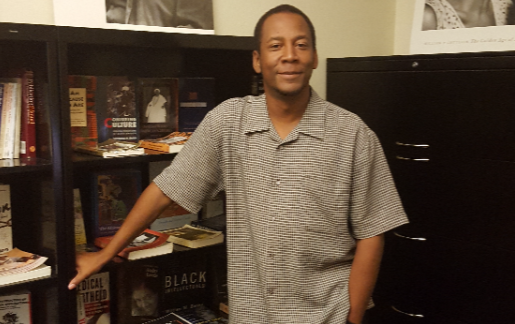Ebone’ Parks
The Birmingham Times

Hip Hop has become bigger than music. It has become an expression of life, said DaReef Jamison, a UAB professor who teaches a course every spring called Psychology of Hip Hop.
“If hip hop is an expression of life then what we’re looking at in hip hop is not just hip hop, but what’s going on in the world,” he said.
The psychology of hip hop views music as a social science, a way to look at what’s going on in society. Topics such as race, class, gender, regionalism, sexual orientation are examined in various hip hop songs and the culture itself asking “What does hip hop have to say about these things?”
This class is different from others because the students are able to see themselves; they are able to play music in class, be on their phones and learn that hip hop is not just noise and not just people talking.
Jamison said, the course looks at different categories of rap, “for example, recreational: partying, having a good time; reality: drugs, guns, violence, degradation of women, materialism and conscious: social, culture and political issues.”
He also explains the conditions that created hip hop, in particular DJing and Reaganomics, where people didn’t have access to certain music programs or equipment. “These folks got creative and took two turn tables and started making music with other people’s music by sampling, taking the best parts,” he said.
Beginning in South Bronx in New York in the 1970s, African Americans, Latinos, Puerto Ricans and people from Caribbean formed hip hop. It is looked upon as a culture, Jamison said, the DJing, graffiti, break dancing which are forms of hip hop, not just rapping.
But is hip hop still relevant to our culture? Jamison says yes.
“If you look at what hip hop is, it’s not confined by the time period,” he said. “As long as issues impacting the people who are involved, police brutality, gentrification, education, economics, all those issues that human being deal with, as long as hip hop speaks to that, it’s still going to be relevant.”
There has also been a dramatic change in hip hop since it began. It’s become worldwide and the role of the DJ, dancing and other elements of hip hop have changed as well according to Jamison.
For example, he said, “early on, the DJ was the center of the music, and we can’t even imagine that now. Even Will Smith’s first album was He’s the DJ, I’m the rapper, where the rapper is secondary; you don’t see the role of the DJ as much anymore.”
“Trap Music”
The professor also talked about “Trap Music,” which is a newer genre that has taken over the hip hop culture and has created a possibly divide. There is a change in the sound, creating a genre within a genre and Jamison doesn’t think there is a disconnect between trap music and the hip hop sound born in 1970. “If trap music is about trap life, what is it trying to tell us?”
The term “trap” is used to refer to the place where drug deals are made and how it is difficult to escape the lifestyle.
The divide is between the trap music which talks about drugs, money and women and the conscious rappers who focus on various social movements and social organizations. What is going on in our society? For example, N.W.A., the California based hip hop group addressed the relationship between the black community and the police in their record, “F*** the Police”.
Records and artists like N.W.A., brings attention to social issues, “(trap music) is not a disconnect, but a window and a voice we have to listen to,” Jamison said.
Within the course, the students are required to read articles and books, written by hip hop scholars and intellectuals. The three books the class focuses on are: “The Hip Hop Reader” By Tim Wood, “The Hip Hop Wars” by Tricia Rose and “Message in the Music: Hip Hop, History, and Pedagogy” By Derrick P. Alridge.
At the end of the course, the students create presentations on hip hop in different parts of the world such as Japan, Cuba, Brazil, Canada and Senegal because of the global spread of the culture.
Jamison, whose favorite artists include A Tribe Called Quest, Lauryn Hill, Queen Latifah, OutKast, Roots, Kendrick Lamar, said he is proud of evaluations he receives, the most important being that the class isn’t boring.
“Students feel like they can talk more, and express themselves more,” Jamison said.





